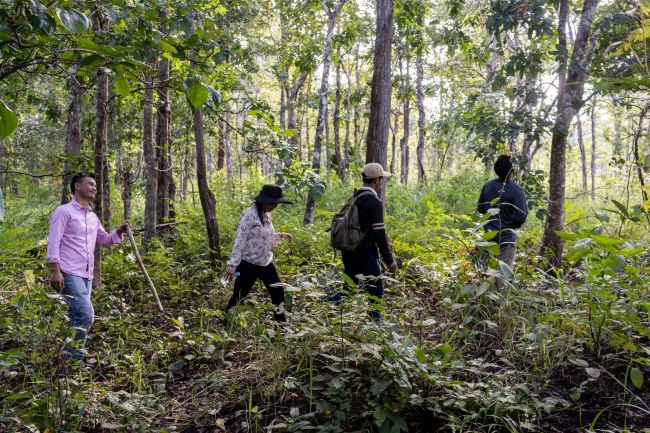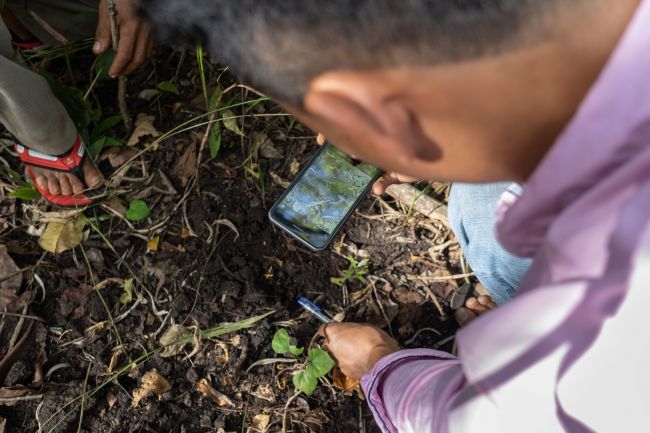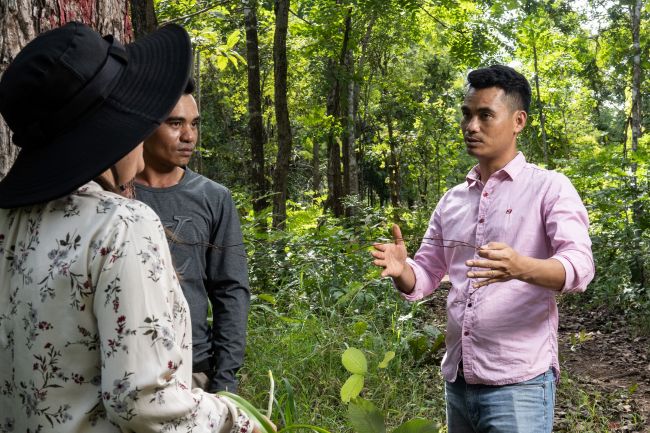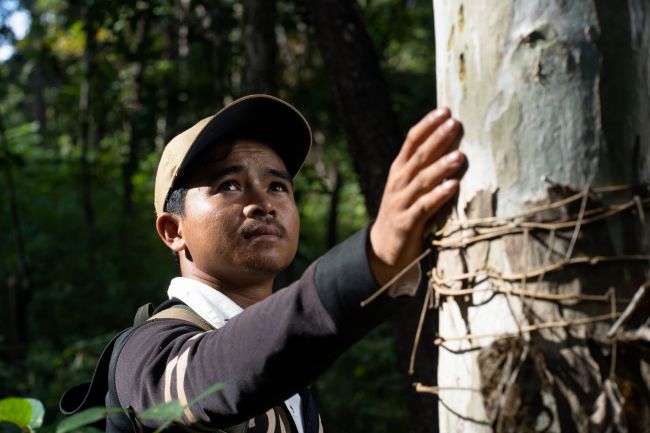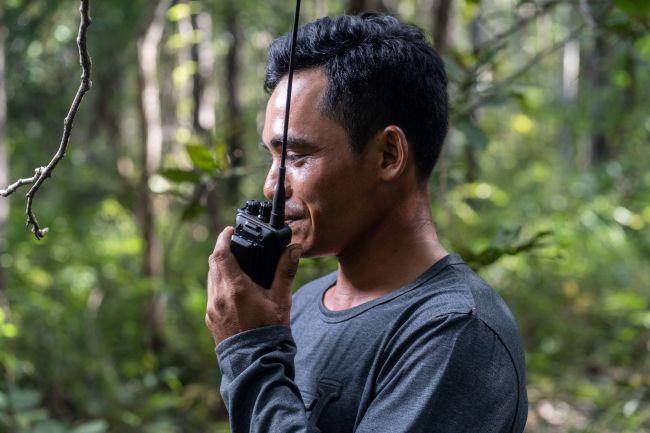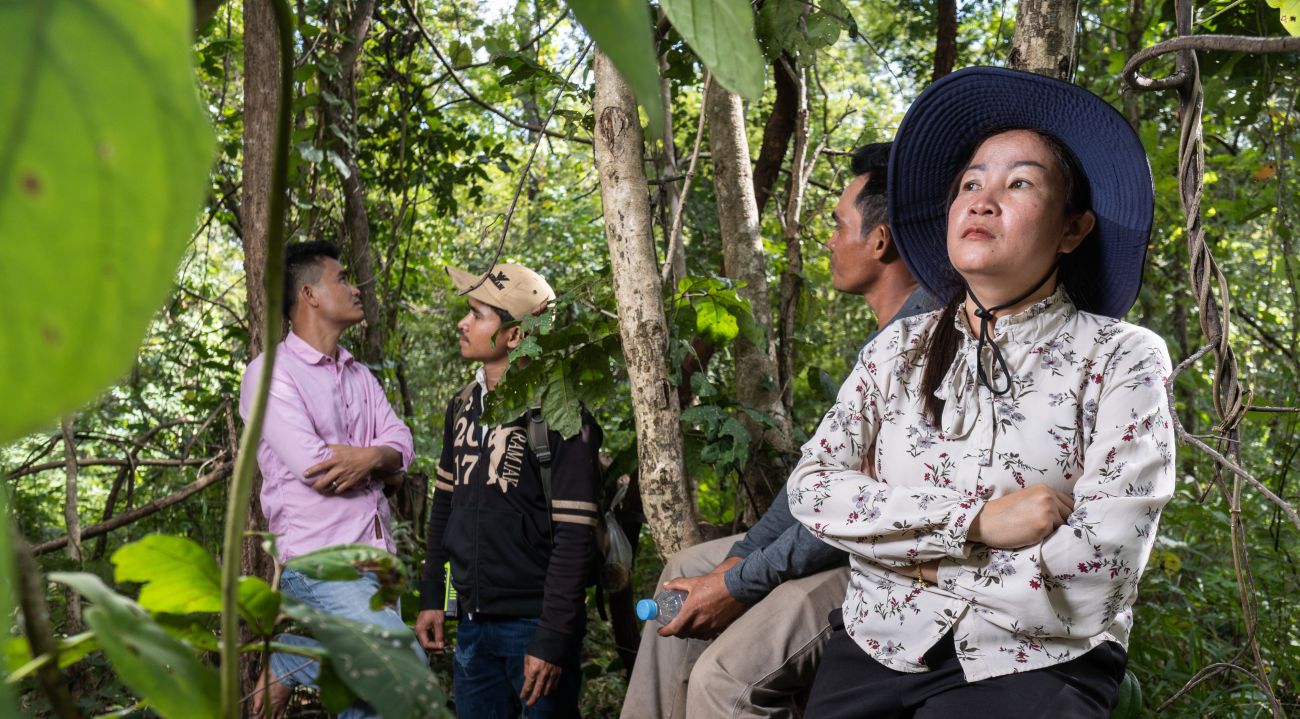
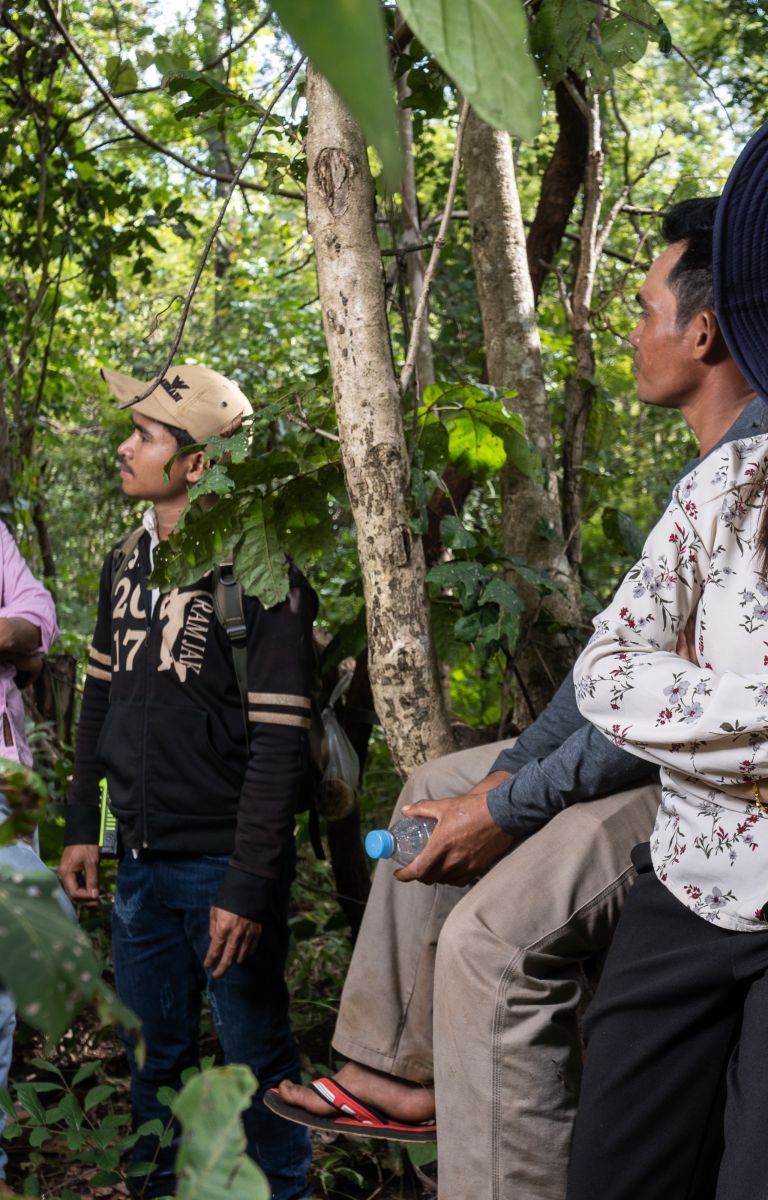
When Cambodia established the Ministry of Environment in 1993 its forests were disappearing rapidly. To stop the decline, the new ministry issued a Royal Decree establishing 23 conservation areas under state control. Cambodia’s system of protected areas was born, covering 18 percent of the country and 31 percent of its forests.
During the 1970s and 1980s, Cambodia was in constant upheaval while political factions vied for political power. The two decades of conflict and political isolation protected Cambodia’s forests from the timber boom that raged through countries like Thailand and Malaysia at that time. By the mid-1980s, Cambodia’s national forest cover, including rubber and palm oil plantations, was hovering around 60 percent, according to government data.
But in 1985, the government of the People’s Republic of Kampuchea (PRK) declared forestry to be one of four ‘economic spearheads’ of the new five-year plan (1985-1990). The government’s experiments with economic liberalization, as Andrew Cock argues in his book Governing Cambodia’s Forests, coincided with depletion of timber sources in the other ASEAN countries. Cambodia’s extensive forests had become the new frontier for timber exploitation.
By 1989, regional and international interest in Cambodian timber had skyrocketed. The Khmer Rouge, which now resided in the western margins of the country, and the Phnom Penh-based PRK used the global interest in Cambodian timber to fund the political strife and further their objectives. Timber rents were slowing replacing the funding coming from Cold War politics. That same year, international peace talks began, culminating in the 1991 Paris Peace Accords and the country’s first free elections in 1993. The elections presented an opportunity to centralize control over the country’s extensive natural resources while simultaneously pursuing conservation initiatives.
Despite good intentions, the system didn’t work well in the early years when civil strife and bad roads made it almost impossible for forest officers to enter the protected areas located in the western Cardamom Mountains and the eastern provinces of Mondulkiri and Rattanakiri.
By 1998, when forest officers were finally able to enter the protected areas, they were surprised to find that the maps of protected areas did not reflect reality on the ground. They found local communities living inside and near protected areas. They depended on the forest for food, timber, medicines and income.
The Ministry did not want to remove the communities. So, in 1999, it piloted four informal Community Protected Areas, within Cambodia’s system of protected areas. The Ministry’s aim was to engage local communities in managing the forest. Several years later, Cambodia reinforced these initial pilots by proclaiming that community organizations could participate in the management of protected areas. However, the government did not bolster the proclamation with laws, guidelines or support. Consequently, forests within and outside the protected areas continued to decline.
In 2008, Cambodia took greater steps to stop the decline of its forests when it passed the Protected Areas Law establishing four zones within protected areas: core zone, conservation zone, sustainable-use zone and the community zone. This law paved the way for communities to claim legal title to their lands and rights to use the forest.
Economic land concessions boost illegal logging
Somorn Lamy, a community leader living in the village of Pou Chrey, remembers the situation in the 2000s clearly.
“There was a big decline of forest resources from 2003 to 2008,” says Lamy, referring to the years when the Community Protected Areas had little guidance and support from the government.
Located 50 kilometres from Cambodia’s border with Viet Nam, Pou Chrey is located on the outskirts of what was once formally known as the Mondulkiri Protection Forest.
During the 2000s, the government began providing land concessions to domestic and foreign investors. The resulting deforestation and road construction often extended into protected areas. According to Lamy, the first economic land concession near Phou Chrey was granted in 2004, stimulating land grabbing and legal and illegal logging by smallholders and companies.
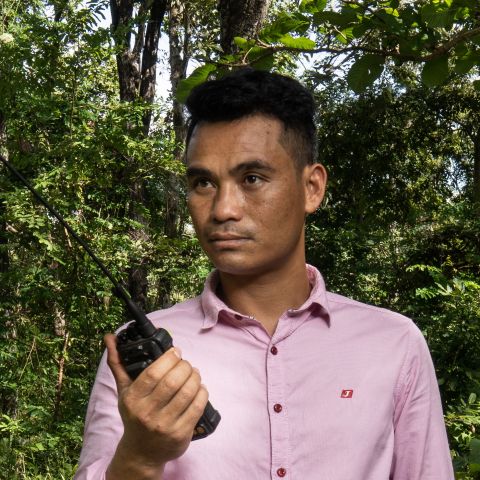
“People from outside the community took timber out, some local people did as well. This jeopardized social cohesion and values within the community.”
Somorn Lamy
Community members began organizing to protect the forest. They set up irregular patrols of the forests but a lack of knowledge and resources rendered their patrolling ineffective.
On the front lines
In 2014, the international community and the Cambodian government offered communities support to ramp up their efforts. That is when the community members of Pou Chrey entered the frontlines of Cambodia’s conservation efforts.
Phou Chrey established a Community Conservation Forest, similar to the Community Protected Area, in the Mondulkiri Protection Forest, which fell under the jurisdiction of the country’s Forestry Administration. In 2016, when jurisdictional reform occurred nationally, the government transferred authority over the area to the Ministry of Environment, which renamed it as the Srepok Wildlife Sanctuary.
Srepok Wildlife Sanctuary is today the largest intact dry forest in Indochina, according to the World Wide Fund for Nature (WWF). It is home to endangered species such as the Asian elephant, leopard, clouded-leopard, wild cattle, giant ibis, white-shoulder ibis and Siamese crocodile.
WWF and RECOFTC, with funding from the European Union, supported the community in its early conservation efforts.
“We received capacity building and technical support from the government and non-governmental organizations,” says Lamy. “One effect was that we better understood the Community Protected Area regulations, including access and use.”
They learned how to formalize a Community Protected Area, keep records, manage budgets, use Geographic Positioning Systems (GPS) and map resources.
These new skills, along with the formalization of the Community Protected Area, were instrumental in solidifying the community’s earlier patrolling efforts into official teams.
“Before we set up the Community Protected Area and had official patrolling teams, there was illegal hunting and logging,” says Sou Sunthary, the accountant of the Pou Chrey Community Protected Area management committee. “Now, there is still a decline in forest resources, but the patrols and the Community Protected Area have slowed the decline.”
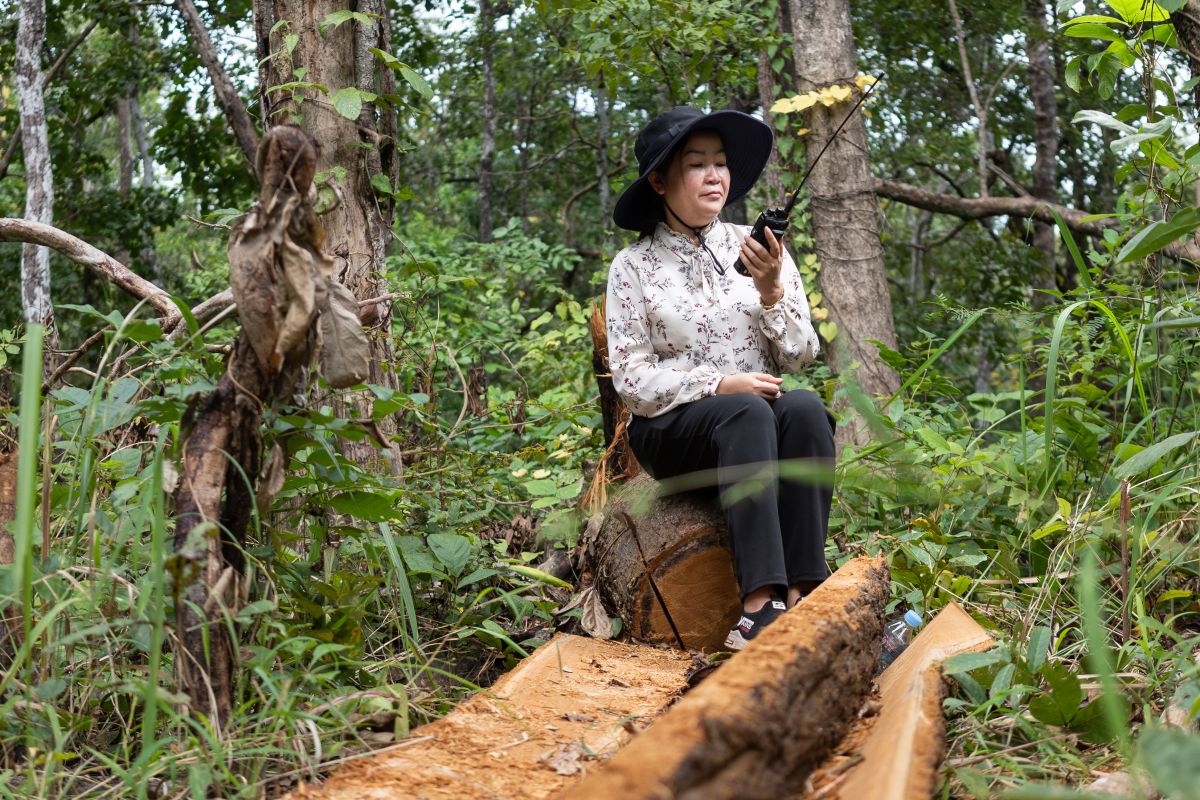
Community patrols take action
Building on the success of Pou Chrey and other villages, the government began placing more forestland in the hands of the Ministry of Environment and communities. By 2017, the Royal Government of Cambodia had placed 40 percent of the country, or 7 million hectares under the system of protected areas.
Community management is helping the Ministry of Environment, which has limited funding and personnel, to fulfil its responsibilities. It has only 1,260 rangers to oversee the entire system of protected areas. That’s 5,000 hectares for every ranger.
“The number of rangers is limited, whereas the number of community members is many,” Lamy says. “We are the ones who report crime or other illegal activities, even within the larger protected area.”
Communities face great challenges and are ill-equipped to engage with illegal loggers and hunters who are sometimes armed and can be well-funded. The dangers to both communities and rangers are substantial. Three members of a routine government patrol were killed by illegal loggers in 2018 in Keo Seima Wildlife Sanctuary, another protected area in Mondulkiri.
Four teams of eight to ten people now regularly patrol the Pou Chrey’s 2,400 hectares of forest, using cameras, GPS and record books to monitor the health of the forest and intercept illegal hunters and loggers.
“When we see people logging or hunting, we take action to enforce the Community Protected Area regulations,” says Lamy.
This includes issuing fines and warning letters to less serious offenders, such as community members from Pou Chrey or outside communities who are caught cutting down trees in the area. More serious cases, like large scale illegal logging, are brought to the commune council and other local authorities.
“It puts pressure on those who carry out illegal activities,” says Lamy. “If you don’t patrol, people will hunt and log freely.”
A model for the future
Patrols produce valuable information that Pou Chrey villagers share with other communities in the area. Information exchange helps them understand the changes in their forests and the changing methods of illegal loggers and hunters. It also helps them quickly identify whether illegal encroachment, hunting or logging is happening. But their work, conducted far away from Phnom Penh, is not always noticed.
In 2017, three years after the first formal patrol teams began to traverse the forests near Pou Chrey, the Voices for Mekong Forests project (V4MF) saw an opportunity to change this.
V4MF is a five-year initiative funded by the European Union. In Cambodia, the project is implemented by RECOFTC in partnership with WWF and the NGO Forum. V4MF is strengthening community networks and connecting ground-level monitoring efforts to national policymakers in the country. It amplifies the work communities, non-governmental organizations and other civil society members are doing to promote the good governance of Cambodia’s forests.
“We are working to strengthen governance by focusing on the needs of local communities,” said Soum Sokunthea, a V4MF project officer with WWF Cambodia in Mondulkiri. “V4MF is ensuring that there is constructive engagement with authorities at both provincial and national levels to support and empower communities.”

V4MF is using Community Protected Area Networks as a mechanism for coordination, building capacity and sharing information. Representatives from each provincial network attend meetings at the landscape level, which covers three distinct areas of the country: Eastern Mekong, Northern Tonle Sap and Southern Tonle Sap. Representatives of the landscape level then attend national meetings. V4MF also works at the national level to strengthen this process and build the capacity of the network to contribute to policy.
At the ground level, V4MF formed a governance group to empower communities and support their patrolling efforts. Communities in and around the protected area coordinate and patrol regularly. They also organize meetings with local governments and park rangers. The governance group and regular committee meetings provide Pou Chrey residents with a better understanding of the Community Protected Area’s regulations and the authority they have to enforce them.
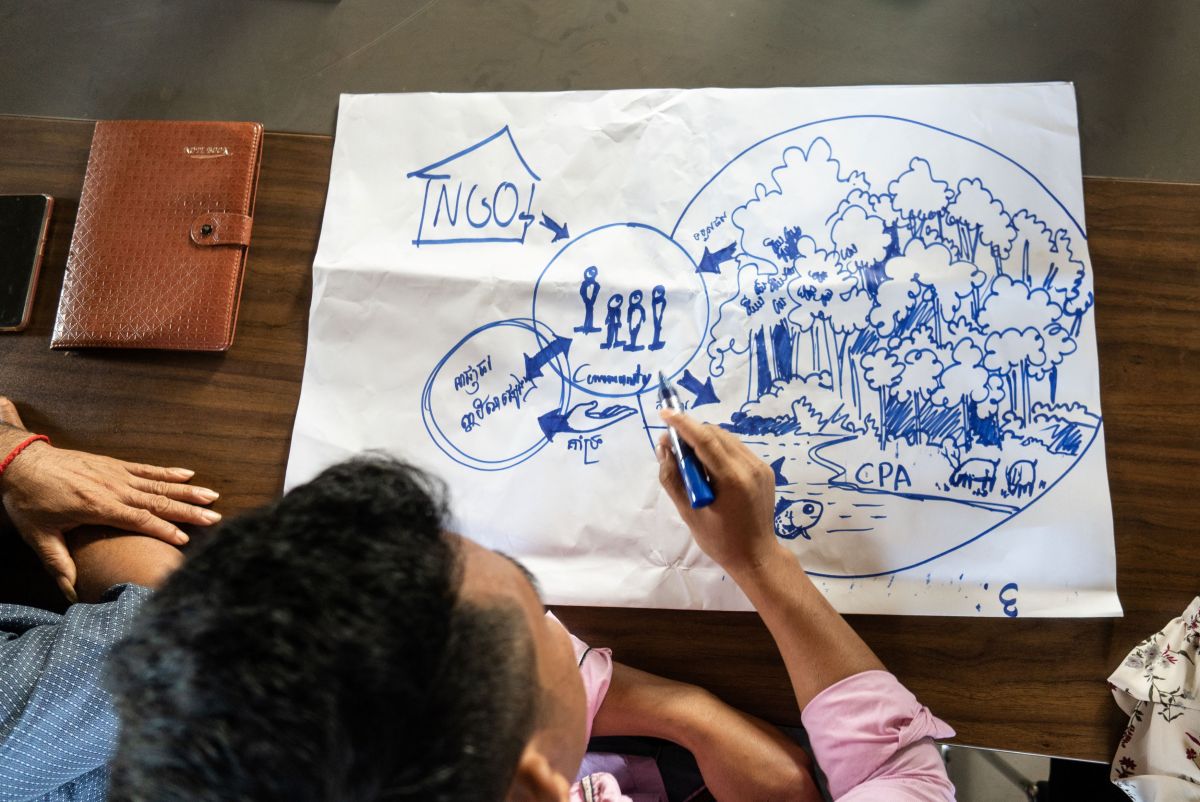
Mobilizing to stop illegal activity
In June 2018, community members came across an excavator during a scheduled patrol of the Community Protected Area. The excavator, owned by a private company, was felling trees and clearing land for stone mining.
Through the governance group, the community submitted an official complaint to provincial and national authorities, which helped to mobilize local authorities and park rangers to take action. Forest clearing stopped immediately and the private company paid the community a small monetary compensation.
A need for greater support
Despite the success of community patrols across the country and an eagerness to patrol beyond their own forest, there are barriers. Communities can only use Community Protected Area regulations and enforce the law through fines and warnings if the illegal activity occurs inside the Community Protected Area. If community patrol teams spot illegal activity outside the community protected area, they must report the activity to the forest rangers who have the authority to arrest the perpetrator.
Moreover, the government often gives private companies lucrative deals and places few institutional restrictions on them. The excavator found in 2018 had a formal license from the Ministry of Mining and Energy.
As of today, there are only 168 Community Protected Areas across Cambodia, making up less than 5 percent of the country’s protected area system. This means that community patrols have authority over 285,609 hectares, a mere dent in the 7 million hectares the Ministry of Environment is required to protect. This drastically restricts the ability of community patrol groups to substantially support the Ministry. Yet communities like Pou Chrey are hopeful about the future of Community Protected Areas in the country, and they believe in their ability to save Cambodia’s protected areas.
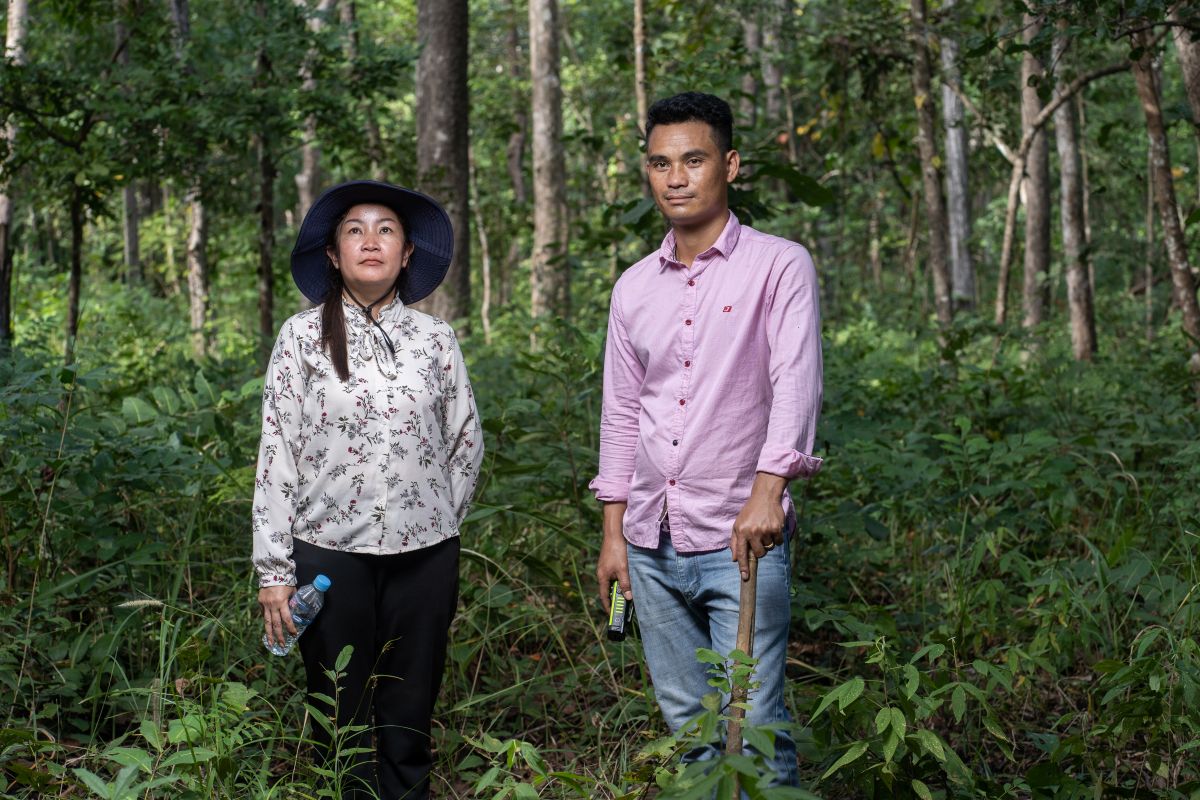
“CPAs can conserve and protect these resources,” says Lamy. “If there are more Community Protected Areas, there will be more resources that are better protected.”
###
This story is produced with the financial support of the European Union. Its content is the sole responsibility of RECOFTC and does not necessarily reflect the views of the European Union. To find out more about this and other activities under the EU-funded Voices for Mekong Forests, visit the project page.
RECOFTC's work is made possible with the continuous support of the Swiss Agency for Development and Cooperation (SDC) and the Swedish International Development Cooperation Agency (Sida).


